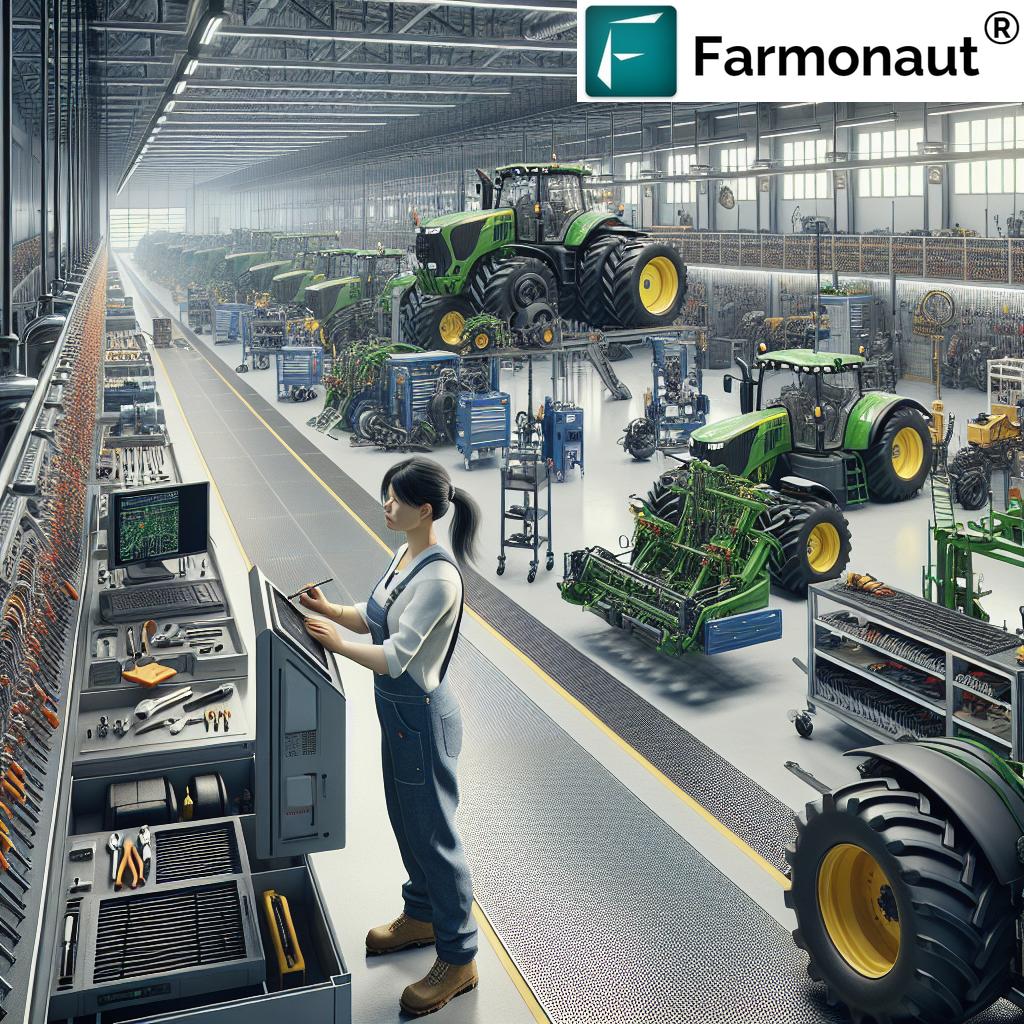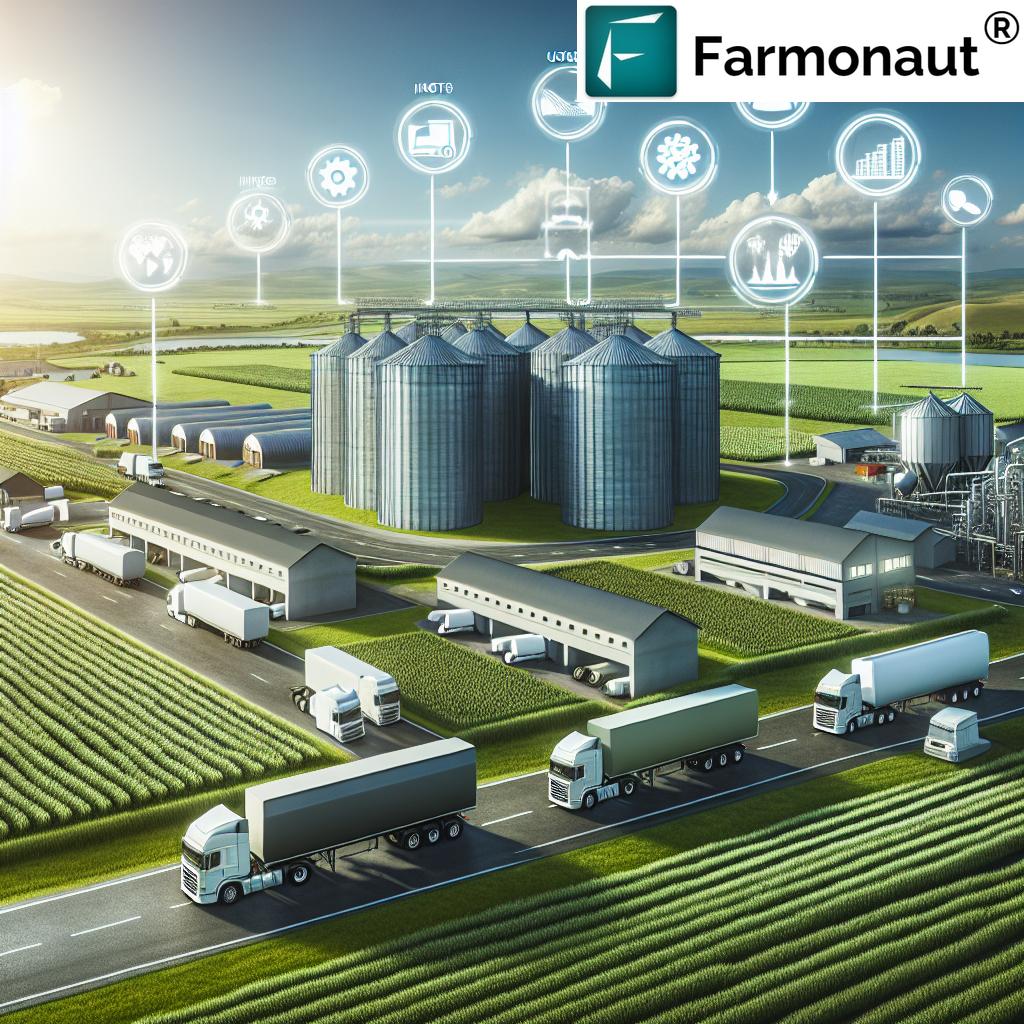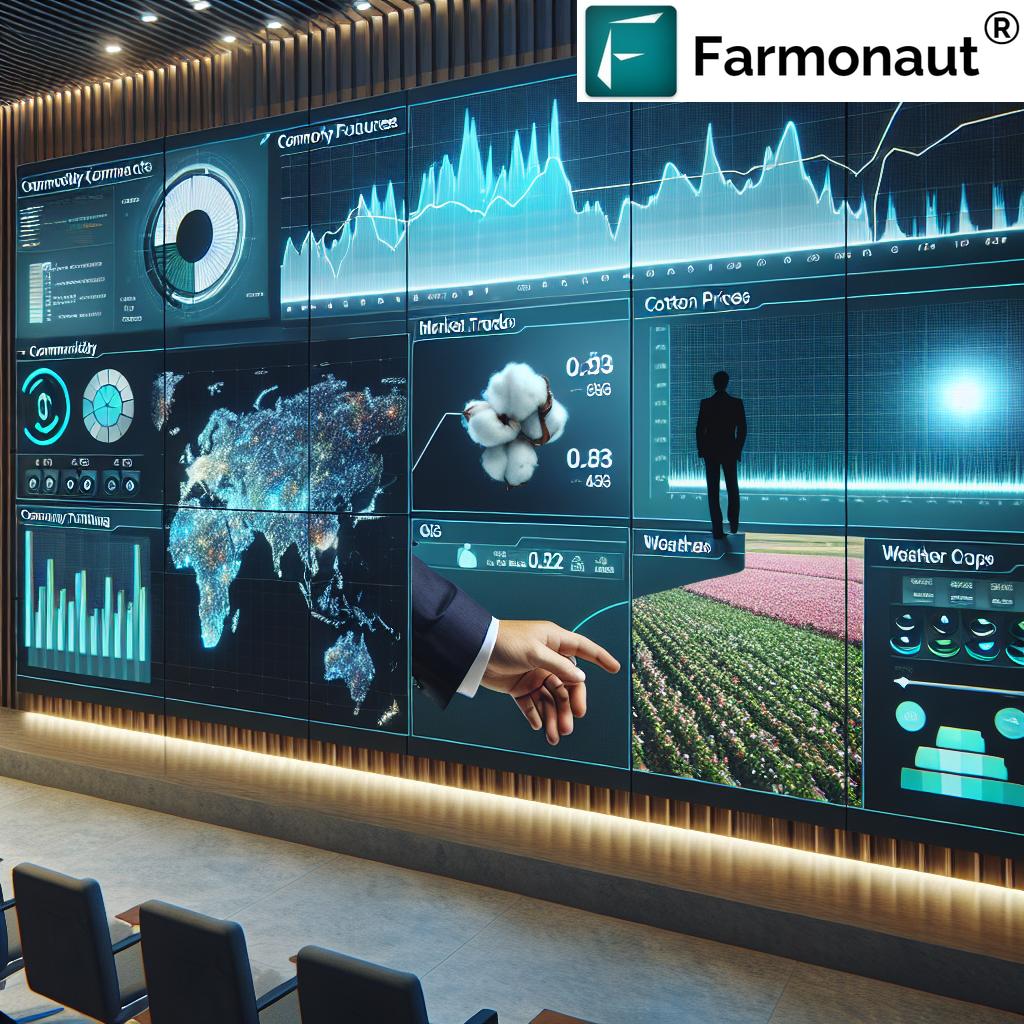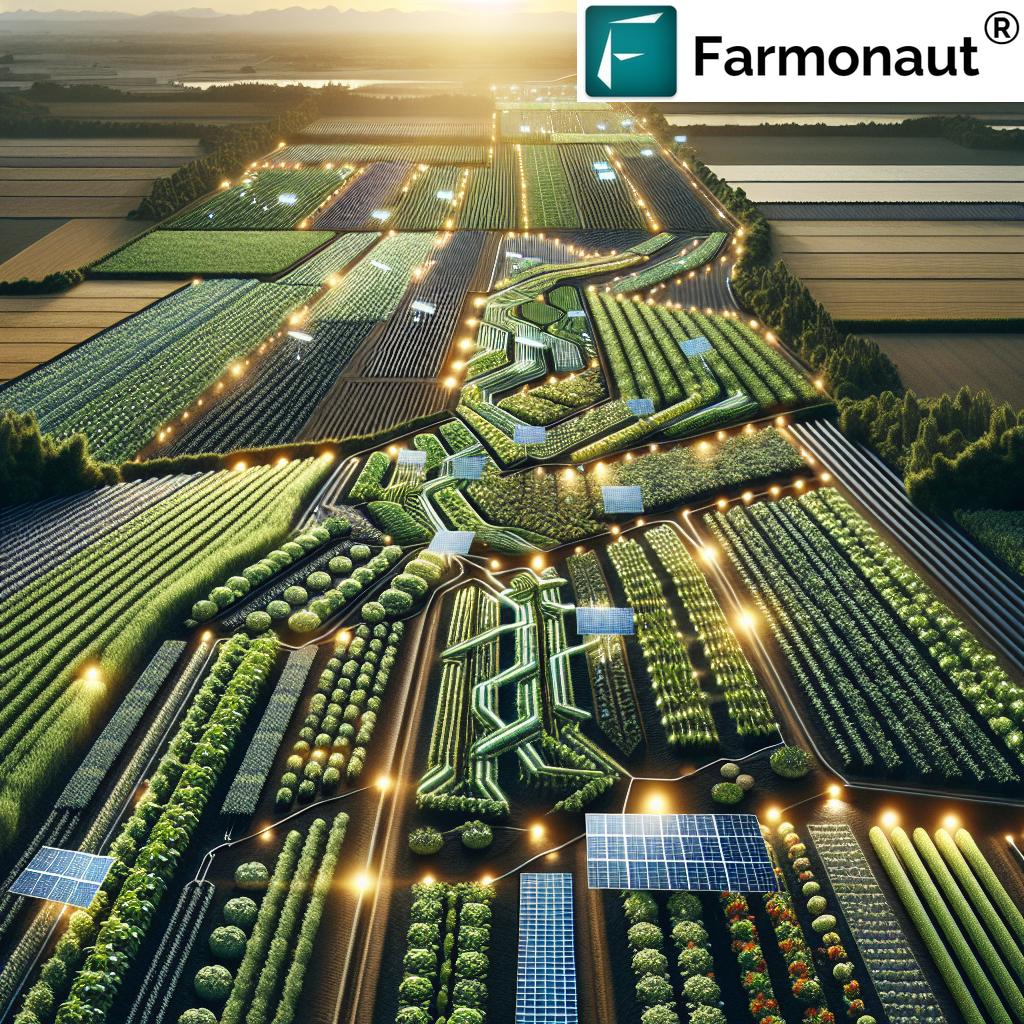Table of Contents
- Introduction: Why High-Tech Greenhouses in 2025?
- Trivia: Winter Greenhouses by the Numbers
- Understanding High-Tech Greenhouses in 2025
- Cost of Building a High-Tech Greenhouse with Automation Systems – 2025 Overview
- Cost Breakdown and Benefit Comparison Table
- Automation, AI, and IoT: Building the Smart Greenhouse
- Heating, Lighting & Insulation: Winter Usability of High-Tech Greenhouses
- Smart Video Insights: Modern Greenhouse Innovation
- How Farmonaut Supports Smart Greenhouse Farming
- ROI, Efficiency, and Sustainability
- Frequently Asked Questions (FAQ) – Winter Greenhouses & Automation Costs
- Conclusion: The Future of Greenhouse Farming in 2025 & Beyond
Cost of Building a High-Tech Greenhouse 2025: Winter Use
The Cost of Building a High-Tech Greenhouse with Automation Systems in 2025 and Its Winter Usability
As global demand for fresh produce grows and climate variability increases, agriculture is undergoing a technological transformation. The cost of building a high-tech greenhouse with automation systems 2025 emerges as a vital consideration for forward-thinking growers. These greenhouses are now pivotal solutions—enabling consistent, year-round production, particularly in regions experiencing harsh winters.
This article explores the cost elements involved in constructing a state-of-the-art greenhouse with advanced automation and climate control systems. We also answer a critical question: Can you use a greenhouse in the winter effectively and sustainably?
Understanding High-Tech Greenhouse Technology in 2025
High-tech greenhouses in 2025 are more advanced, automated, and data-driven than ever. These modern facilities integrate sophisticated climate control systems, automated irrigation, fertigation, LED grow lights, and sensor-based monitoring for temperature, humidity, CO2 levels, and soil moisture. Together, these elements enable optimal growing conditions, regardless of the outside weather.
Key advantages of 2025 greenhouses:
- Consistent Crop Yields: Automated systems maintain the ideal conditions for a wide variety of crops, ensuring stable production and high quality all year.
- Resource Efficiency: Automated control of irrigation, lighting, and heating reduces water, nutrient, and energy costs. Sophisticated sensors deliver precise, real-time data for optimized decision-making.
- Enhanced Labor Efficiency: Automation reduces manual work and error, freeing up labor for higher-level tasks and reducing operational costs.
- Adaptability to Winter & Harsh Climates: Advanced insulation, heating, and light management ensure that winter or cold climates don’t halt production.
- AI & IoT Integration: The latest automation systems in 2025 now use AI for predictive analytics and IoT devices for remote management and automated controls.
A transformative solution for sustainable farming, these greenhouses elevate precision and enable cultivators to:
- Prolong growing seasons into winter, ensuring uninterrupted market supply
- Maximize resource efficiency, reducing ecological impact
- Utilize real-time monitoring for disease, pest, and stress prediction
- Grow crops not previously feasible in cold climates
Cost of Building a High-Tech Greenhouse with Automation Systems 2025: Detailed Breakdown
The cost of building a high-tech greenhouse with automation systems 2025 depends on variables like size, location, crop type, technology stack, and level of automation. However, for a commercial-sized facility (≈2,000m²), here’s the cost structure you can expect in 2025:
- Structure & Materials – $250,000–$400,000: Includes steel framework, transparent polycarbonate or glass panels, foundation, and specialized environmental barriers for winter use.
- Climate Control Systems – $100,000–$180,000: Advanced heating, ventilation, cooling, humidity and air-exchange to maintain optimal growing conditions regardless of external weather.
- Automation & Sensor Technology – $80,000–$150,000: Sensors for temperature, light, humidity, CO2, soil moisture, and integration with centralized automated controls for irrigation, lighting, and fertigation.
- Lighting Systems – $60,000–$120,000: LED grow lights optimized for plant photosynthesis to extend daylight hours in winter and improve yields.
- Irrigation & Fertigation Systems – $40,000–$70,000: Smart, automated soil and hydroponic irrigation with precise, AI-optimized fertigation.
- Software & Integration – $20,000–$40,000: AI decision-support platforms, IoT device integration, data dashboards, remote access, and predictive analytics.
Total Estimated Investment: $550,000 to $960,000 for a 2,000m² high-tech greenhouse facility. Smaller or less complex automation systems can lower costs, but winter-use readiness remains a central driver.
Cost Breakdown and Benefit Comparison for Winter-Ready High-Tech Greenhouses (2025)
| Component/System | Estimated Cost (2025, USD) | Winter-Specific Benefit | Energy Efficiency Impact |
|---|---|---|---|
| Automated Climate Control (heating/ventilation) | $100,000–$180,000 | Maintains stable temperature and humidity during harsh winters, enabling optimal crop growth | Smart automation reduces energy use by only heating or ventilating as needed |
| High-Performance Insulation Materials (polycarbonate, multilayer glass) | $50,000–$80,000 | Prevents heat loss; reduces need for continuous heating in extreme cold climates | Directly lowers heating energy cost |
| LED Grow Lights | $60,000–$120,000 | Enables photosynthesis during short winter days or overcast weather, sustaining high crop yields | Variable spectrum and smart timers improve energy efficiency |
| Automated Irrigation & Fertigation Systems | $40,000–$70,000 | Prevents freezing and overwatering, maintains nutrient levels even when external water sources freeze | Sensor-driven systems reduce unnecessary water and fertilizer use |
| Automated Sensors (temperature, humidity, soil, CO2) | $45,000–$75,000 | Monitors critical conditions, triggers adjustments to maintain optimal winter growing environment | Ensures precise control, minimizing unnecessary system activation |
| Central Automation & IoT Integration Platform | $20,000–$40,000 | Remote control and monitoring ease, rapid response during winter storms or equipment failure | Centralized automation further optimizes resource use |
| Renewable Energy Systems | $85,000–$130,000 | Ensures uninterrupted operations during extended winter cold/weather-related grid outages | Offsets grid dependence; improves long-term sustainability |
Automation, AI, and IoT: Building Smart, Automated Greenhouse Systems for 2025
In 2025, automation is the core of advanced greenhouses. AI-based decision support, IoT sensors, and integrated control platforms have made greenhouses smarter, more efficient, and highly adaptable. Key components include:
- Smart Sensors: Track temperature, humidity, CO2, soil moisture, and light intensity to optimize environmental conditions in real time.
- Centralized Automation: Automated controls adjust heating, lighting, irrigation, and fertigation based on live sensor data—resulting in precise resource usage and improved crop quality.
- AI Analytics: AI systems predict plant requirements, forecast upcoming environmental challenges (such as winter cold snaps), and suggest adjustments to maintain optimal conditions.
- Remote Monitoring via IoT: Greenhouses now offer full operational oversight from smartphones or computers—a major leap for efficiency, safety, and fast response in winter.
Farmonaut Large-Scale Farm Management offers satellite-powered mapping, AI health monitoring and real-time environmental analytics—enabling precise, data-driven decisions in both open fields and protected greenhouse agriculture. This is especially valuable for those integrating automation in high-tech greenhouses to maximize yields, resource efficiency, and sustainability, especially during winter.
Heating, Lighting, and Insulation: Ensuring Winter Usability of Greenhouses
A primary advantage of a high-tech greenhouse is its proven ability to extend the growing season into winter and enable year-round production, even in the most challenging climates. This is achieved using advanced heating, insulation, and lighting solutions:
- Advanced Insulation Techniques: Double or triple-layer polycarbonate or glass, thermal screens, and air gaps reduce heat loss and help maintain a stable environment—essential for winter use.
- Efficient Heating Systems: Modern greenhouse heating uses geothermal, biomass, or high-efficiency gas systems—some also leverage solar thermal panels for further savings and sustainability.
- LED Grow Lights: LED grow lights supply the exact spectrum plants need for photosynthesis, even during extended winter nights or overcast spells, maintaining crop growth and boosting yields by up to 45% compared to traditional setups.
- Automated Controls: All main systems are monitored and regulated by real-time sensors and AI-based algorithms to reduce energy and input costs through efficient scheduling and responsive controls.
To answer the key query—Can you use a greenhouse in the winter?—yes, modern high-tech greenhouses are designed for winter usability. With robust insulation, backup energy systems, automated heating and lighting controls, and remote management, these facilities not only support but thrive in harsh, cold climates.
- Common Winter Crops: Leafy greens (lettuce, spinach), herbs, strawberries, tomatoes, and some berry crops flourish indoors during winter thanks to tightly-controlled environments.
- Extending to Fruiting or Specialty Crops: Automation and year-round control enable growth of sensitive fruits, specialty plants, and even tropical crops in cold regions.
Smart Video Insights: Greenhouse Technology & Winter Farming
Explore additional insights into modern automation systems, climate-smart solutions, and winter greenhouse farming with these expert resources:
-
Smart Farming Future: Precision Tech & AI Boosting Harvests, Enhancing Sustainability
-
Precision Tech & AI in Sustainable Greenhouse Agriculture
-
Farmonaut Web App | Satellite Based Crop monitoring
How Farmonaut Supports Winter Greenhouse Farming & Automation in 2025
At Farmonaut, we understand that modern farming increasingly relies on data, automation, and real-time insight for efficiency, especially where winter productivity is critical. Our platform:
- Delivers Real-Time Monitoring: We use multispectral satellite images to monitor crop health, detect thermal losses (key for winter operations), and deliver timely insights for automated greenhouse management.
- AI-Based Advisory Systems: Our Jeevn AI analyzes live data, sending growers timely advice to maintain optimal temperature, humidity, and resource use throughout the year.
- Blockchain-Based Traceability: Secure, transparent tracking of greenhouse-grown produce—especially valuable in premium markets requiring proof of sustainable, controlled-environment agriculture.
- Remote Facility Management: Our web and mobile apps allow facility managers to remotely monitor and optimize conditions, react quickly to winter-specific threats, and ensure consistent production and yield.
- Carbon Footprinting & Sustainability: We provide carbon emission monitoring and sustainability dashboards. Visit our dedicated Carbon Footprinting page to learn how to reduce your greenhouse’s environmental impact.
- Traceability Benefits: Enhance transparency of your winter crops with product traceability solutions, strengthening food safety and marketability in regulated or export markets.
- Financing & Insurance: Satellite-based verification streamlines access to crop loans and insurance for greenhouse operations, supporting growth even in adverse winter periods.
- Fleet Management: Utilizing fleet management tools to optimize the movement of goods, supplies, and personnel to and from your greenhouse sites, reducing winter logistics disruptions.
Our commitment: Making satellite-driven, AI-supported solutions affordable for all growers seeking sustainable, year-round greenhouse farming.
ROI, Efficiency, and Sustainability of Winter-Ready High-Tech Greenhouses
While the initial investment in automation and winter-ready greenhouse infrastructure is significant, the long-term returns and benefits are substantial:
- Reduced Labor and Input Costs: Automated systems reduce ongoing expenses for heating, watering, lighting, and nutrient management—especially critical in energy-intensive winter periods.
- Consistent High-Quality Yields: Controlled internal conditions mean predictable, high-volume harvests regardless of external climate volatility.
- Sustainability & Environmental Compliance: Integration of renewable energy, smart lighting, and carbon footprint monitoring (see our Carbon Footprinting tool) makes your winter greenhouse more sustainable and compliant with global environmental standards.
- Food Security: Winter cultivation reduces dependency on long supply chains and imports, allowing local regions to produce fresh crops year-round.
- Market & Profit Opportunity: Premium, off-season, greenhouse-grown produce commands higher prices—improving ROI.
Farmonaut’s digital solutions for resource management, sustainability, and real-time decision support directly contribute to stronger profits, better risk management, and future-proofed food production.
Frequently Asked Questions (FAQ) – High-Tech Greenhouse Costs, Automation, and Winter Use in 2025
1. What is the average cost of building a high-tech greenhouse with automation systems in 2025?
The total cost for a 2,000m² winter-ready greenhouse equipped with advanced automation, heating, insulation, LED grow lights, and integrated controls is between $550,000 to $960,000, averaging $120-$200 per square foot. Less complex or smaller greenhouses cost less.
2. Can you use a greenhouse in the winter, and what features ensure winter usability?
Yes. Automated high-tech greenhouses are specifically designed for winter use with advanced insulation, climate control, efficient heating, and LED lighting. These features keep internal conditions stable even during harsh winters, ensuring reliable crop production.
3. What types of crops can you produce in a high-tech winter greenhouse?
Popular options include leafy greens, herbs, strawberries, tomatoes, and specialty berries. With proper climate automation, even exotic or tropical plants can be cultivated in freezing external environments.
4. How does automation reduce costs and improve ROI for winter-ready greenhouses?
Automation reduces labor, water, fertilizer, and energy costs through real-time monitoring, predictive analytics, and on-demand operation of systems. It prevents crop loss due to environmental stress, supports rapid response to winter threats, and boosts both yield and quality.
5. Are subsidies or financing available for building automated greenhouses in cold climates?
Many regions offer grants or incentives for sustainable, high-tech agriculture. Farmonaut’s satellite-based loan and insurance verification tools help secure financing by providing trusted data on facility status and performance.
6. How does Farmonaut help with ongoing greenhouse management?
We provide real-time satellite data, predictive AI analytics, remote monitoring, and resource management—enabling you to optimize environmental control, reduce costs, improve yield quality, and ensure winter resilience.
Conclusion: Investing in High-Tech Greenhouses for Sustainable Winter Farming in 2025
The cost of building a high-tech greenhouse with automation systems 2025 may seem high, but the benefits are transformative—especially as global demand for efficient, sustainable agriculture increases. With advanced insulation, climate control, LED grow lights, and automated management, greenhouses enable winter crop production—ensuring food security, profitability, and resilience in cold climates.
By harnessing AI, IoT, satellite insights, and blockchain technologies, growers achieve consistent, high-quality yields all year. The integration of digital resource-management solutions, like those we offer at Farmonaut, is now both accessible and essential for sustainable, winter-ready agriculture.
Your next step: Explore how Farmonaut’s solutions can help your facility thrive, cut operational costs, and boost efficiency—for both open-field and winter greenhouse farming.
Ready for data-driven, resilient, sustainable greenhouse farming in 2025? Optimize your winter capability—explore solutions at Farmonaut today.












